On July 4, 2022, the Ukrainian military installed the state flag on Zmiiny. This was the final stage of a complex operation to liberate the island by Ukrainian forces. On June 30, the Russian garrison left Zmiiny under the pressure of Ukrainian attacks.
On the anniversary of the liberation of the island, we recall the strategic significance of this victory and the legends that live in its stones and publish photos of Vitaly Yurasov, a photographer who was one of the first to document the aftermath of the fighting for Zmiiny after his liberation.
Special operation for the release of Zmiiny
Zmiiny Island — a rocky patch of land 20 miles off the Ukrainian coast — has become a symbol of resistance and good Ukrainian tactics. Russia captured it on the first day of a full-scale invasion — February 24, 2022. The liberation of the island was the result of a complex, multi-month operation, which the special agents of the Main Intelligence Directorate detailed in an exclusive material The Wall Street Journal.
It was here that, in response to the proposal of the Russians to surrender, the legendary phrase of the Ukrainian military sounded: “Russian warship, come to us”. Since then, the island has become not only a strategic point in the Black Sea, but also a place around which a continuous struggle has unfolded.
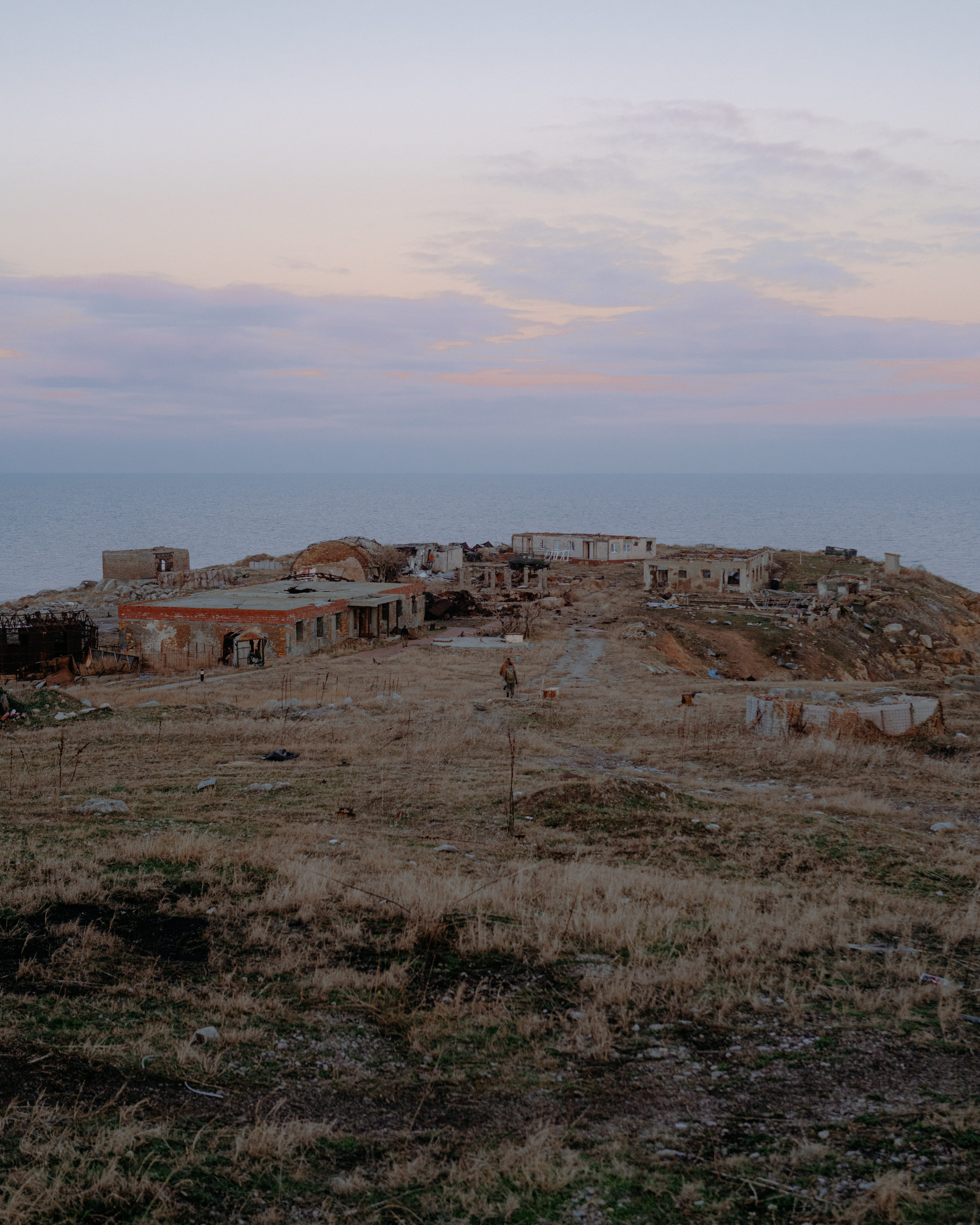
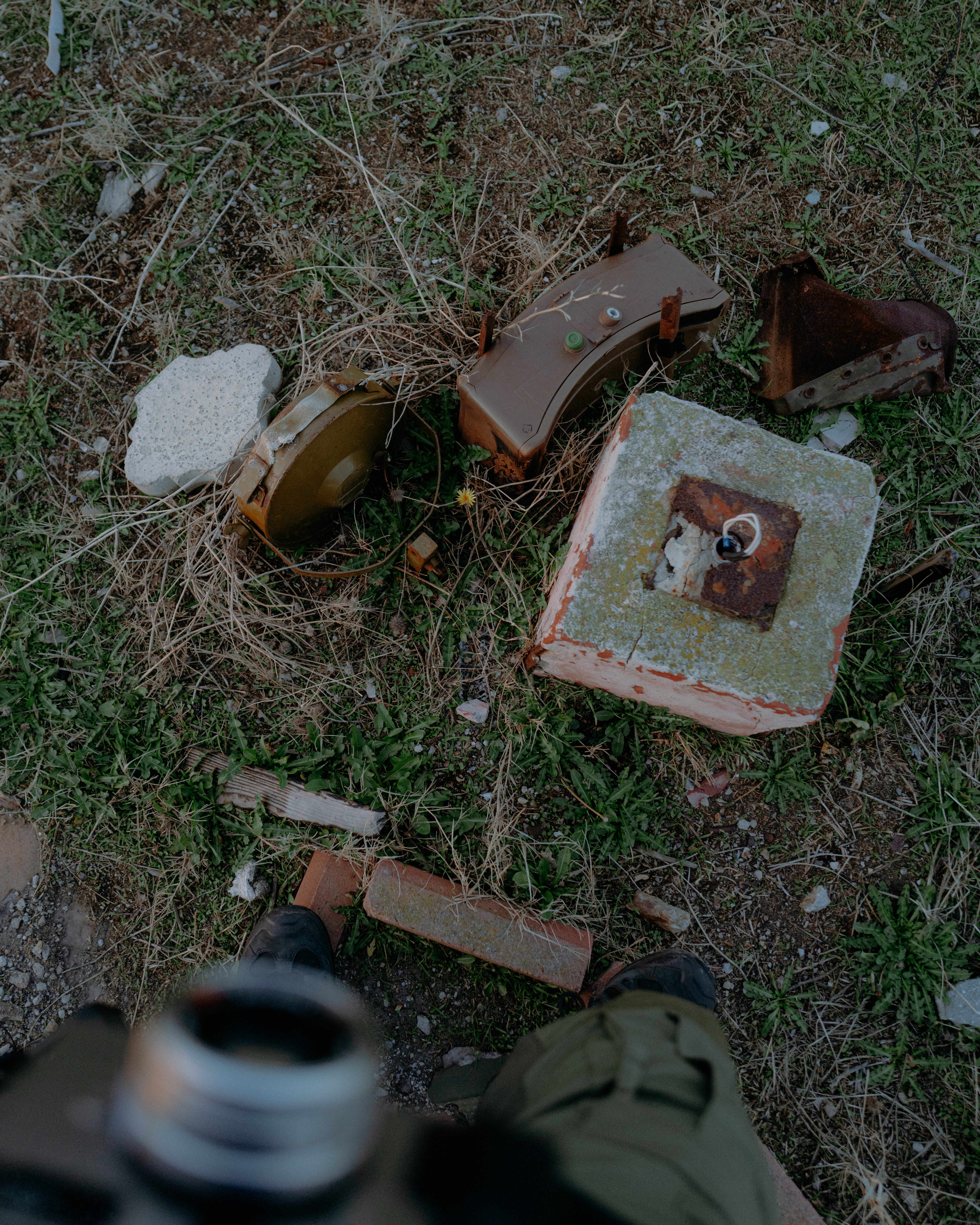
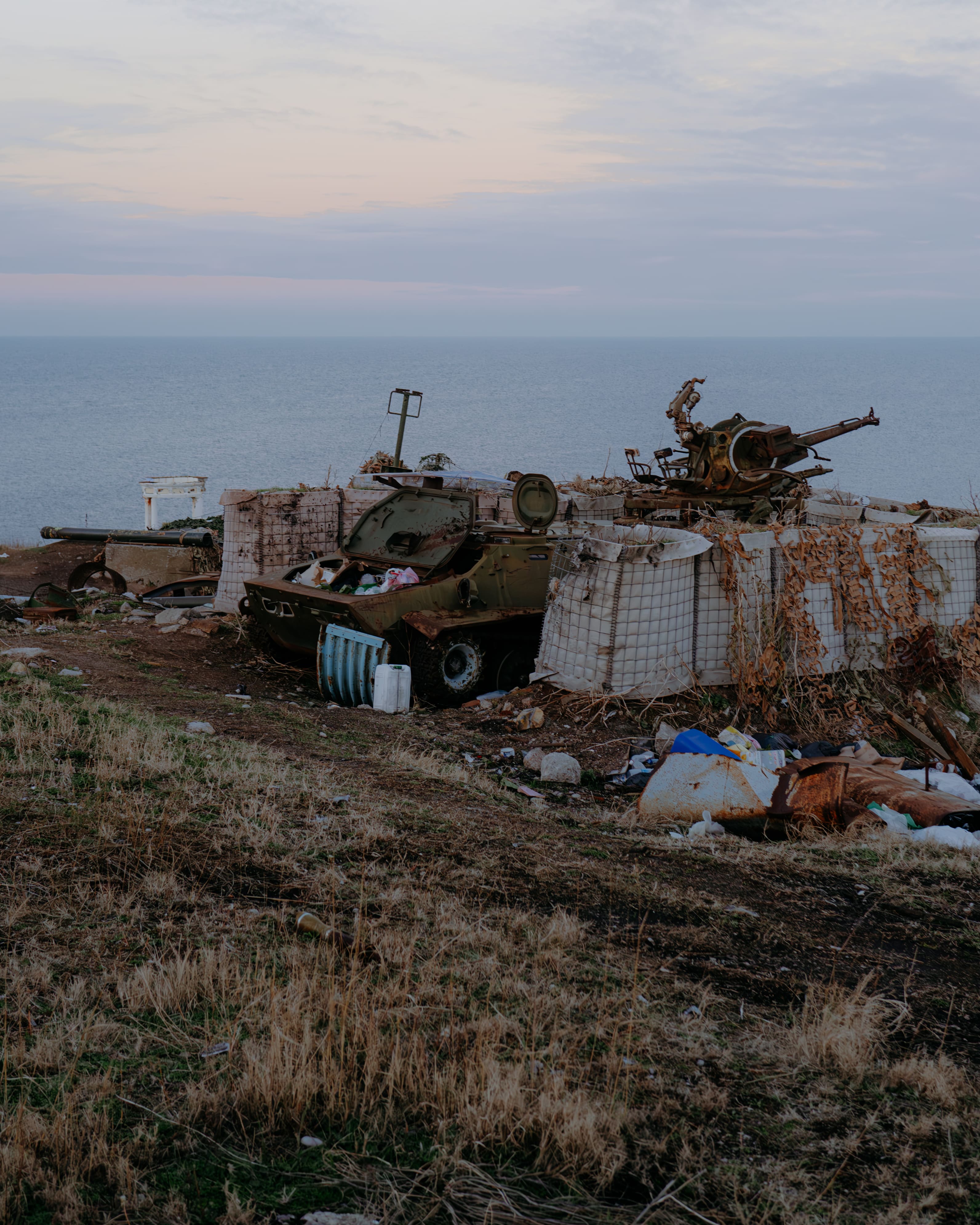
Ukraine began preparations for the liberation of the island in April 2022, after the destruction of the flagship of the Russian Black Sea Fleet, the cruiser “Moscow”. Since then, Ukrainian forces have struck missiles, drones, aircraft, sunk boats and destroyed equipment on the island. 155 mm self-propelled howitzers were mounted on barges and operated from positions not accessible from land. The Hurricane's jet systems also fired just out of the water.
“As soon as we started working systematically — from mid-June — we forced them to leave the island in two weeks.— said the officer of the “Timur Special Unit” GUR MO with the nickname Shakespeare.
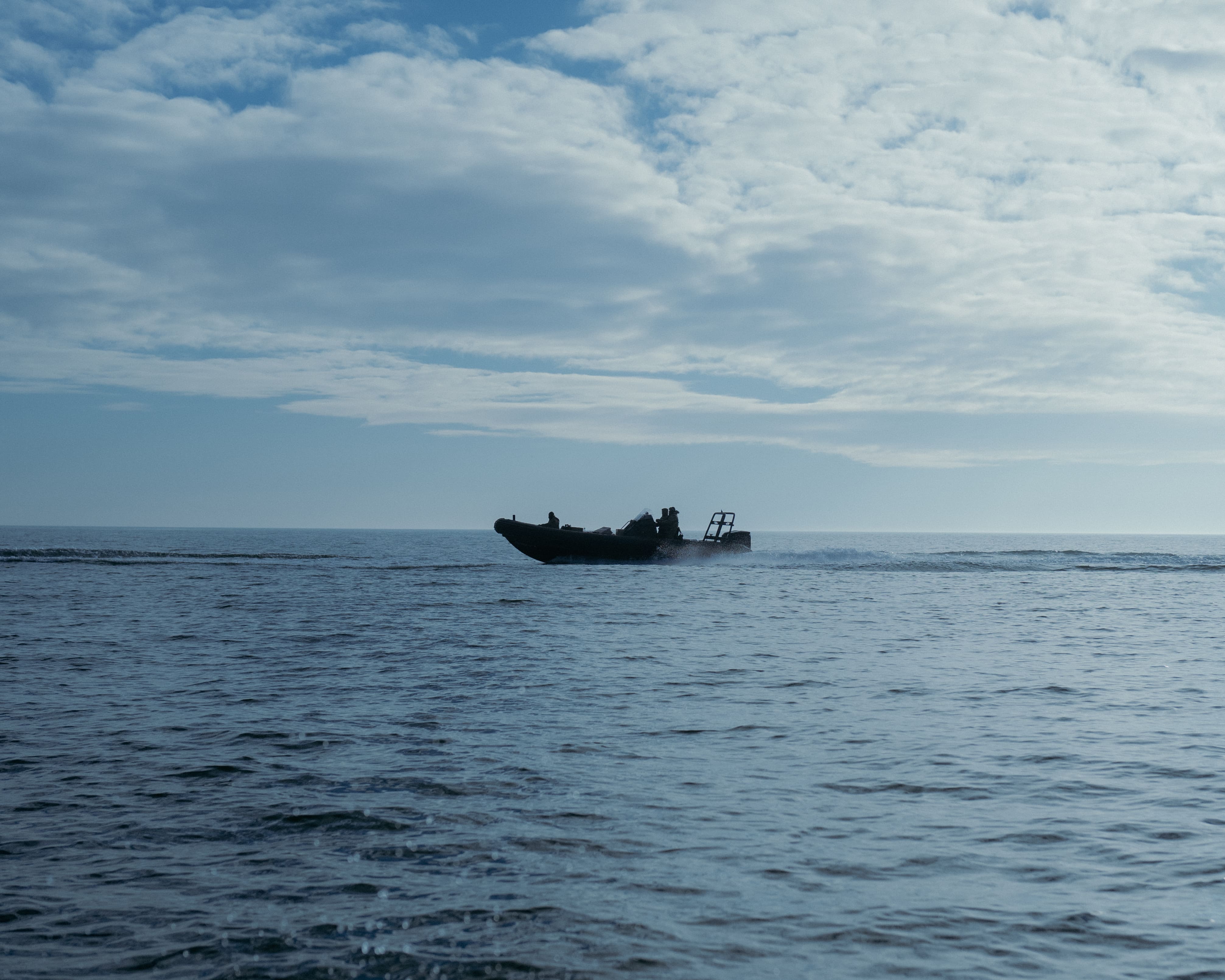
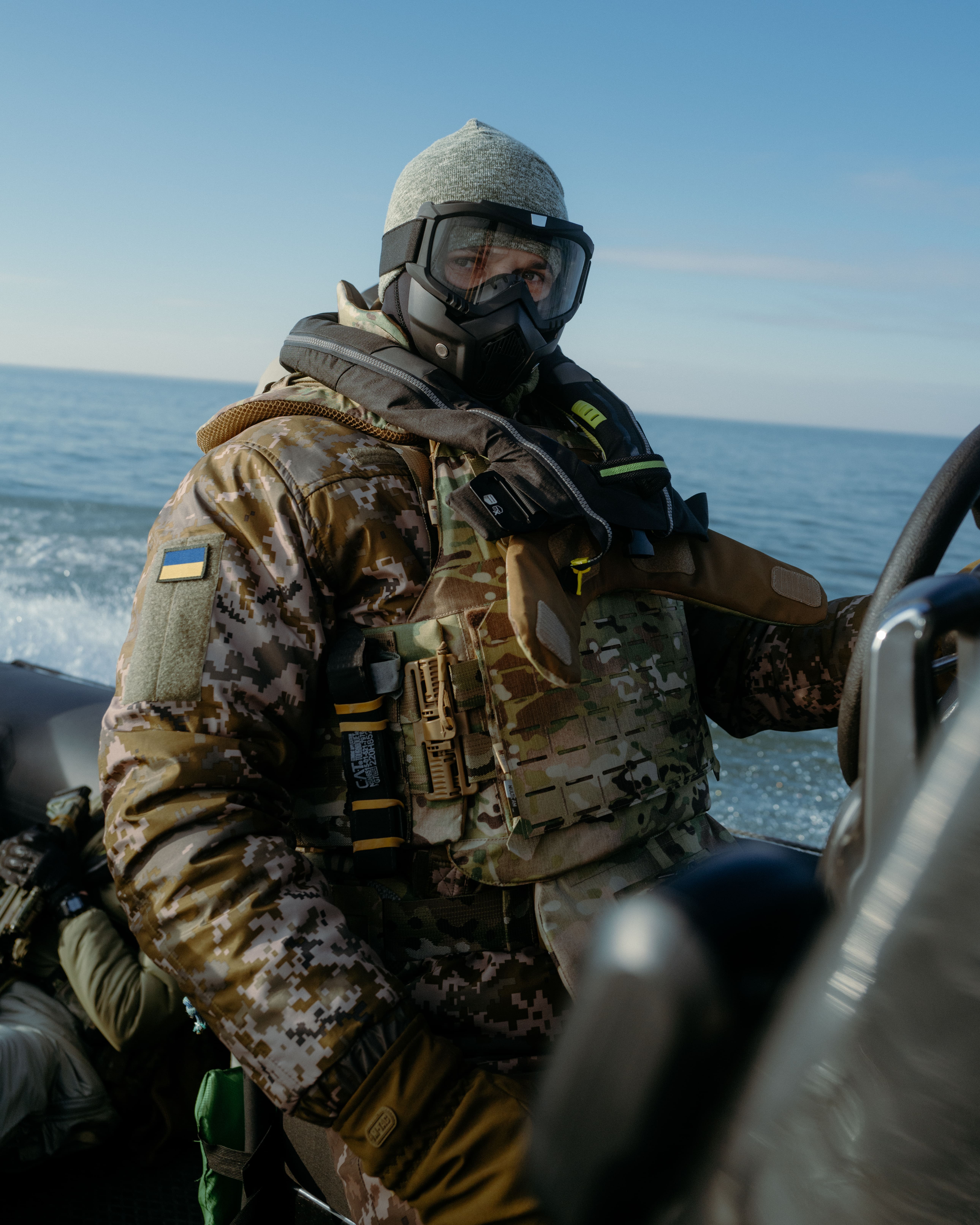
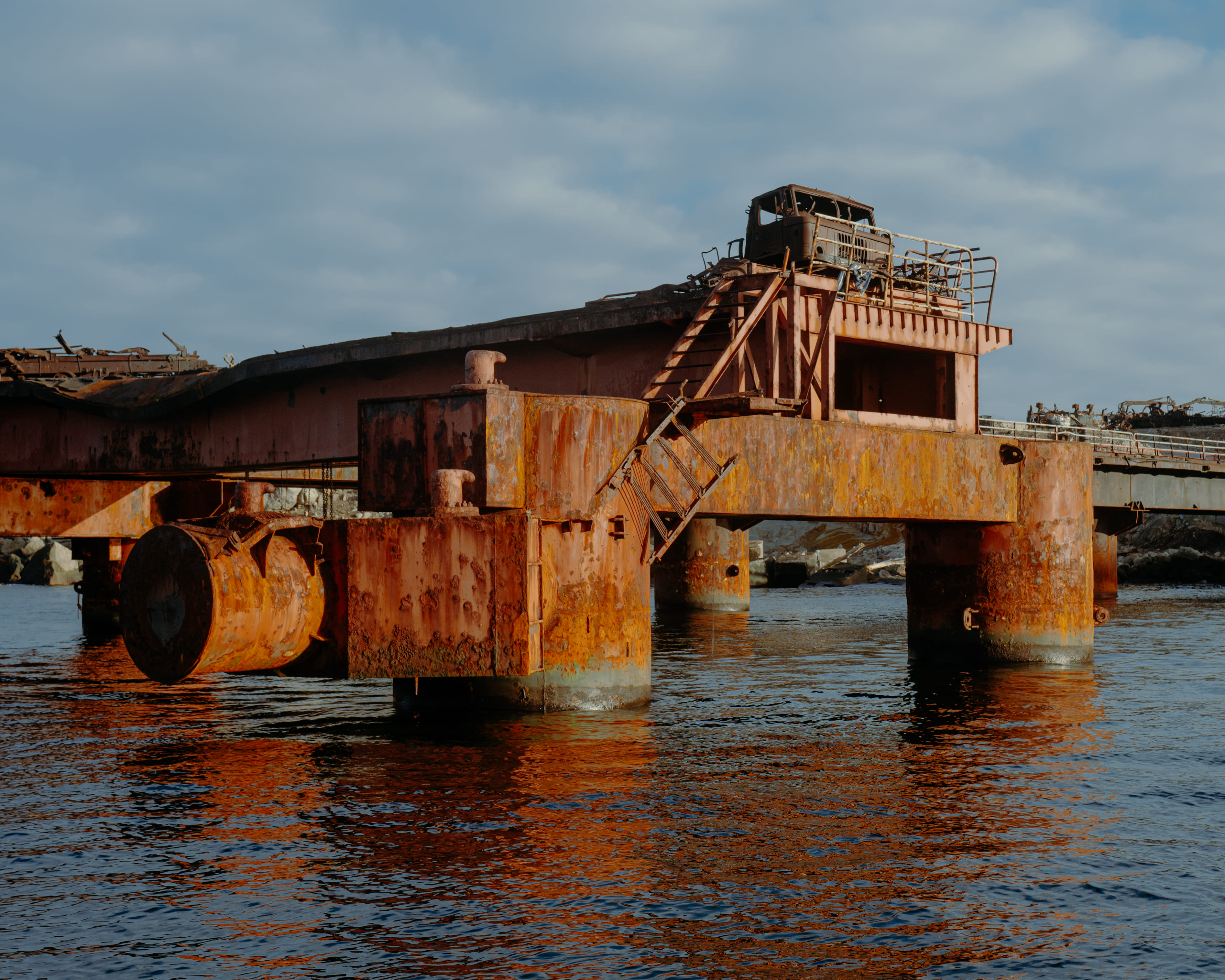
When the invaders left the island, Ukrainians from the “Timur Special Unit” landed to take control of it. Under cover of night, six soldiers led by a callsign fighter Ramses approached the Serpent from the west side. They penetrated the rock, moved past mined buildings and equipment left by the Russians, collected documents and ransomed the premises. In the rain and in the fog, Ramses raised the Ukrainian flag over the island.
The most dangerous part of the operation was still ahead. On the way back, the storm damaged both engines of the boat and the waves overturned it. The military transferred to an inflatable boat with oars. For 28 hours, they drifted in the high seas, depleting water, maintaining pressure in the boat, and trying to avoid enemy positions near the gas platforms where Russian troops were stationed. It was only on the second day that they were finally rescued.
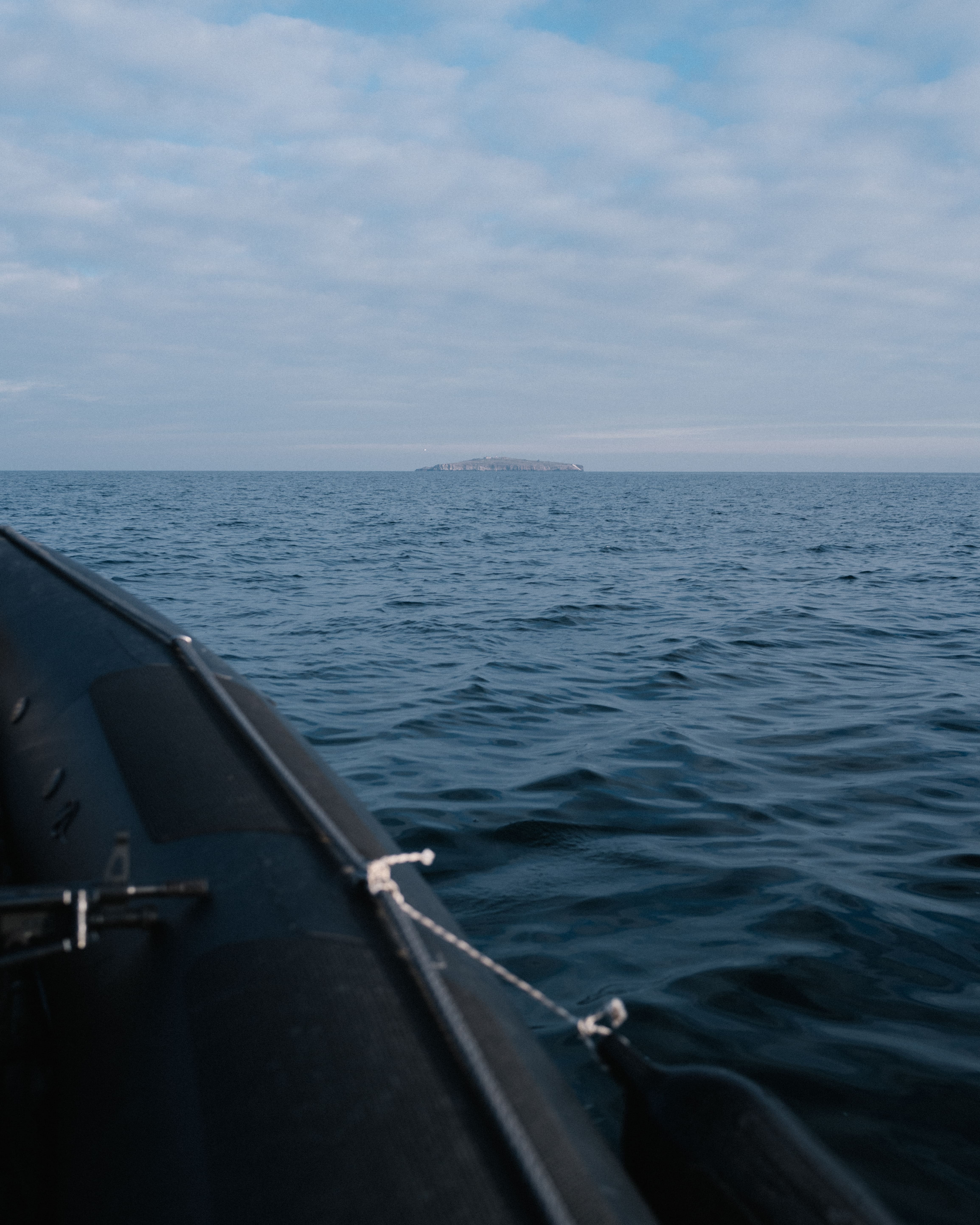
Journalists WSJemphasize: The snake is not only a symbol of victory, but also a lifeline in the Black Sea.It was thanks to its control that Ukraine resumed grain exports and gained an advantage in the region. And as one of the GUR officers with the call sign Ned says: “Whoever controls Snake Island controls the sea.”
Myths of the island
Serpent is not just a geographical point, but a space shrouded in history and myths. Its name, according to one hypothesis, is associated with the ancient Greek hero Achilles. It was here, researchers believe, that his temple could have stood. In the northern Black Sea, Achilles was considered a sacred patron, and in local myths he often appeared in the form of a large snake. According to the myth, his mother, the goddess Photida, could turn into a snake. It was she who made Achilles almost invulnerable. Because of this, the image of the snake is inextricably linked with the hero. Archaeologists found rings with the image of a snake on Zmiiny itself, as well as in the ancient colonial cities of Thira (now Belgorod-Dnestrovsky) and Olvia.
In legends, Achilles, after his death, allegedly received eternal life on this very island. The goddess Photidus appealed to Poseidon to lift part of the land from the seabed, and thus the Serpent appeared. In myths, this place was often referred to as the boundary between the worlds — the shore along which the kingdom of the dead began. The ancient Greeks believed that the Pont Euxinius (Black Sea) was the last seen of souls heading to the otherworldly kingdom of Hades.
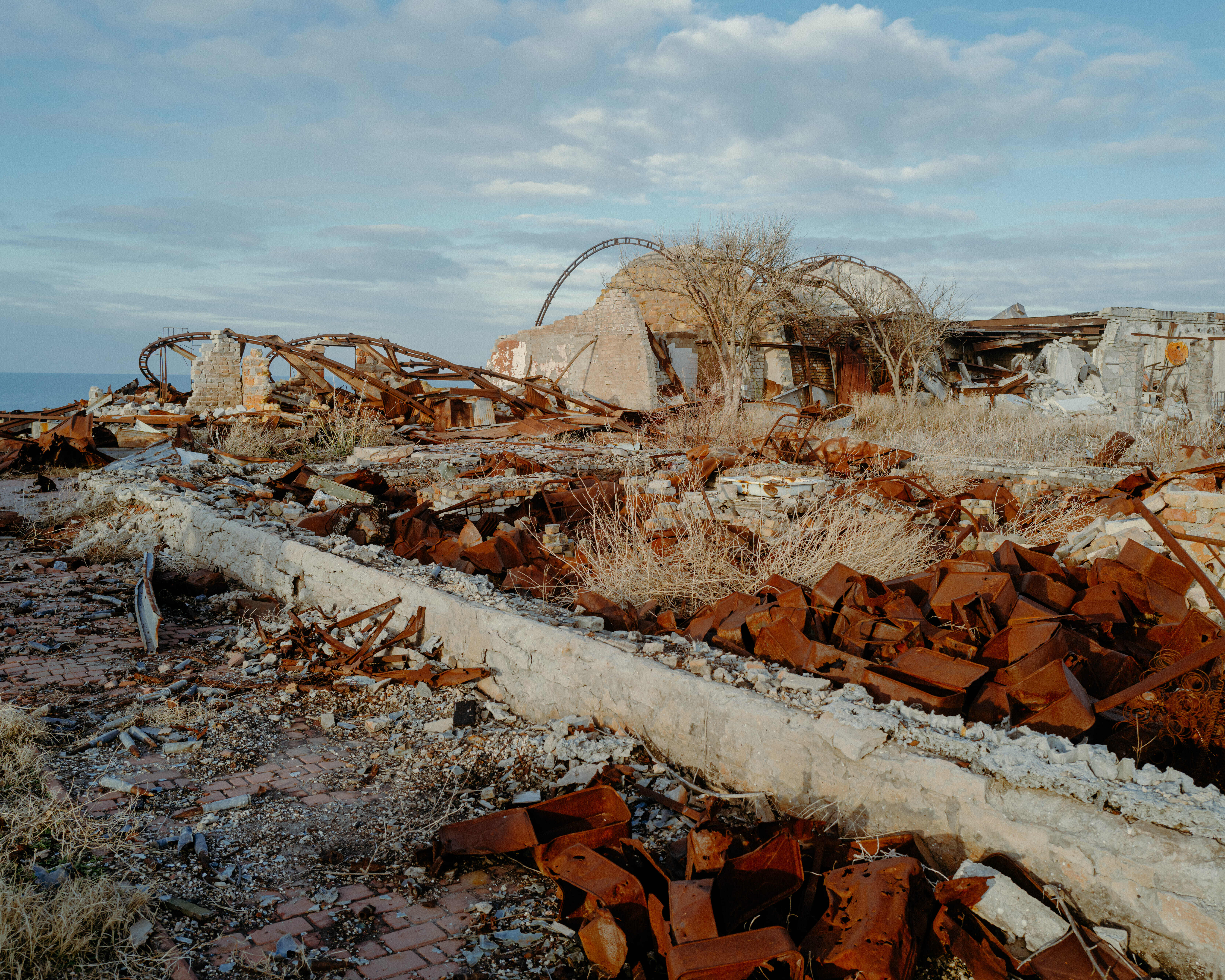
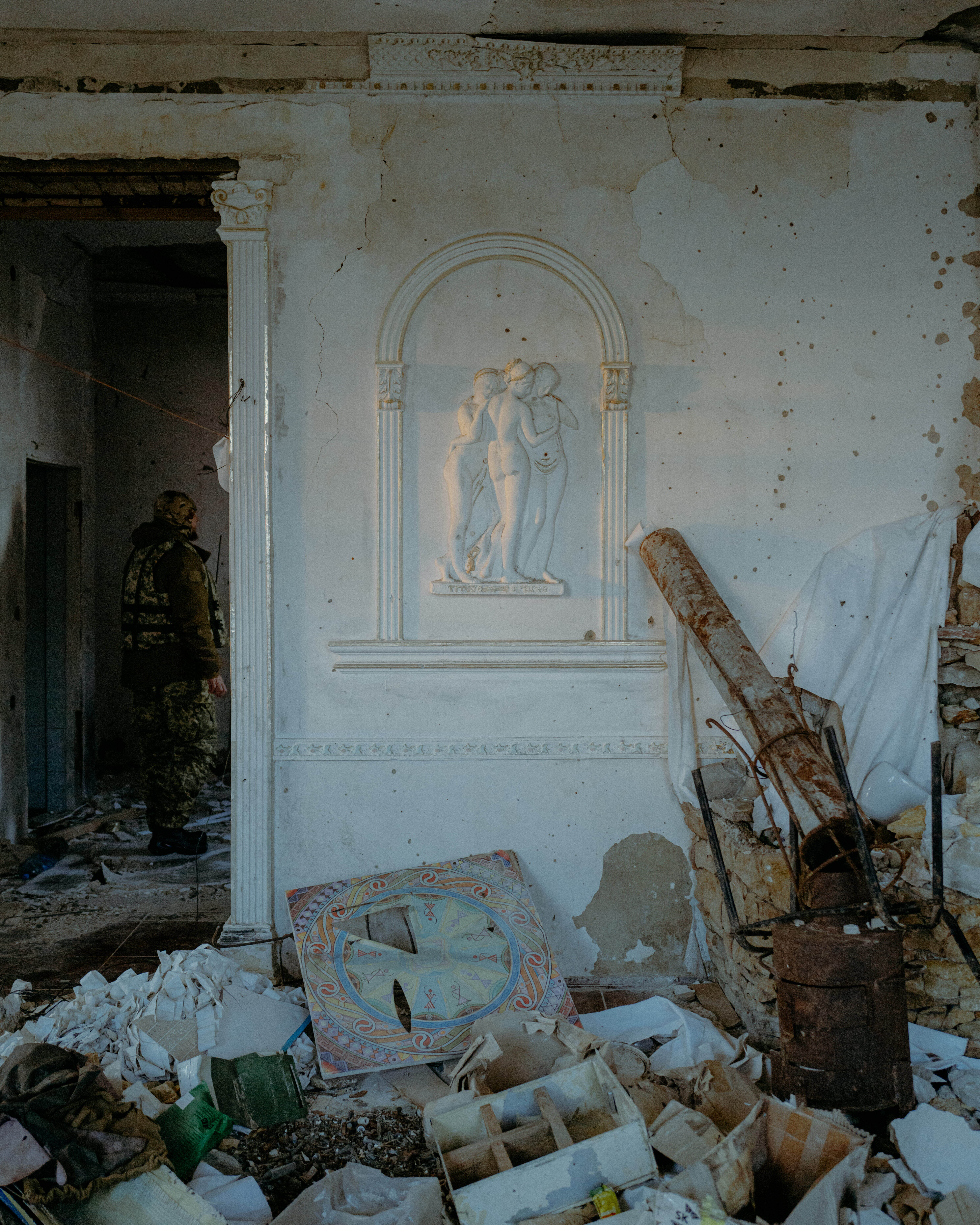
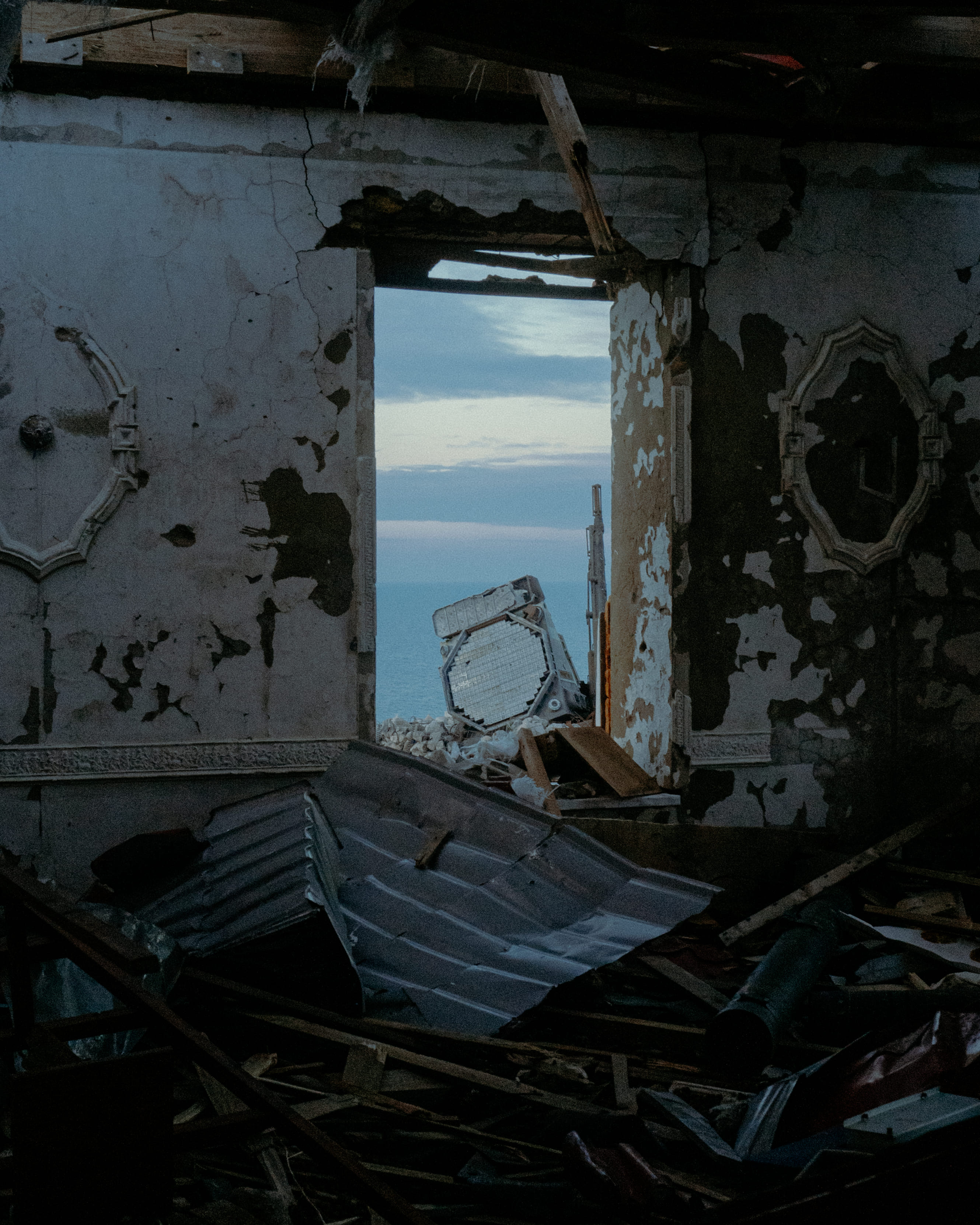
During the Russo-Ukrainian War, the island again became a point of intersection of worlds — this time between occupation and freedom. And both in ancient times and today, it remains a symbol of transition — now not only in the mythological, but also in the true sense: from defeat to victory, from darkness to light.
“I just dreamed of getting there.” Photographer's view of Zmiiny
Photodocumentarian Vitaliy Yurasovwas among the first civilians to hit the Snake after his release. Vitali's photographs were the first public evidence of what the Russian army had left behind: destroyed equipment, abandoned fortifications, devastated landscapes.
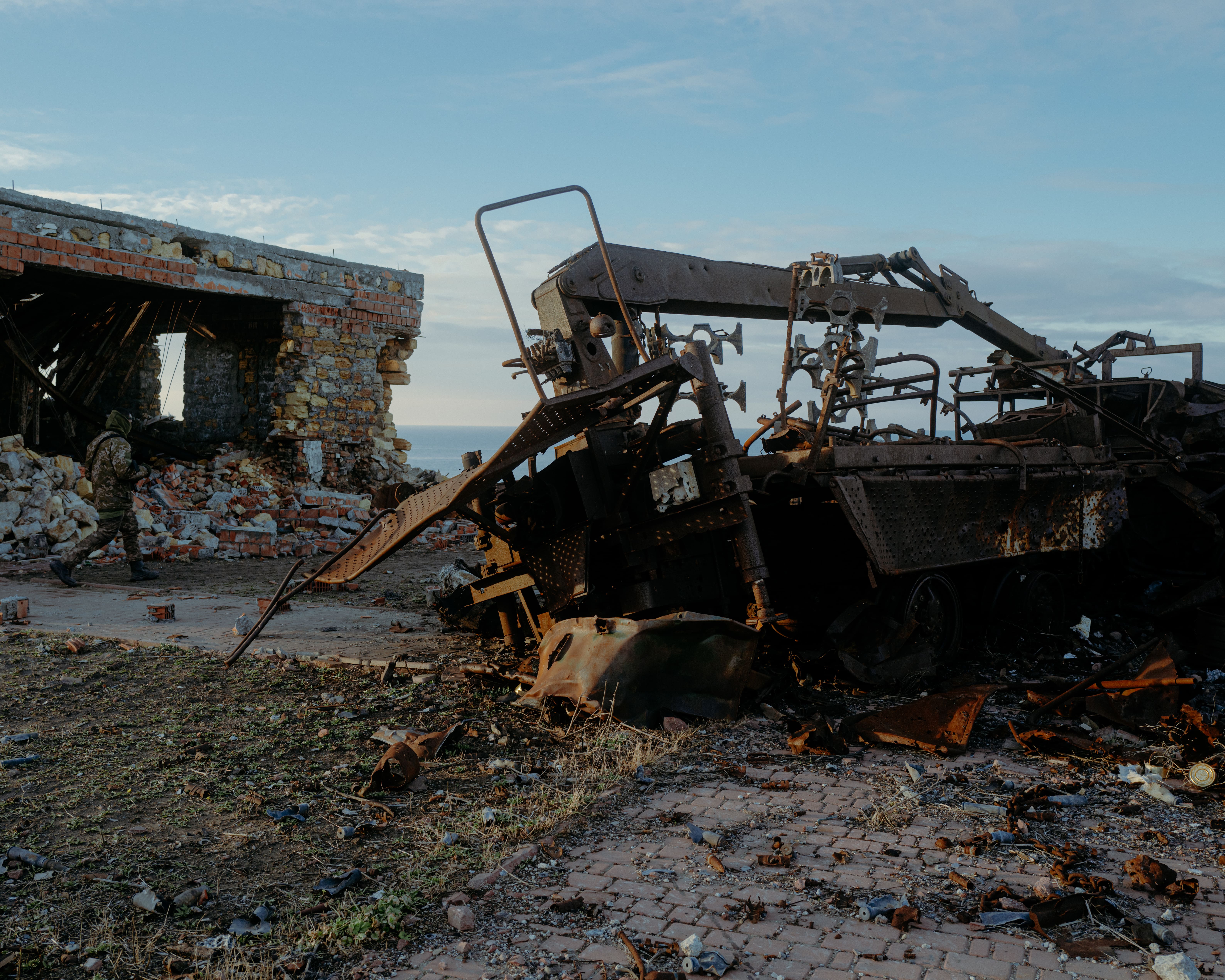
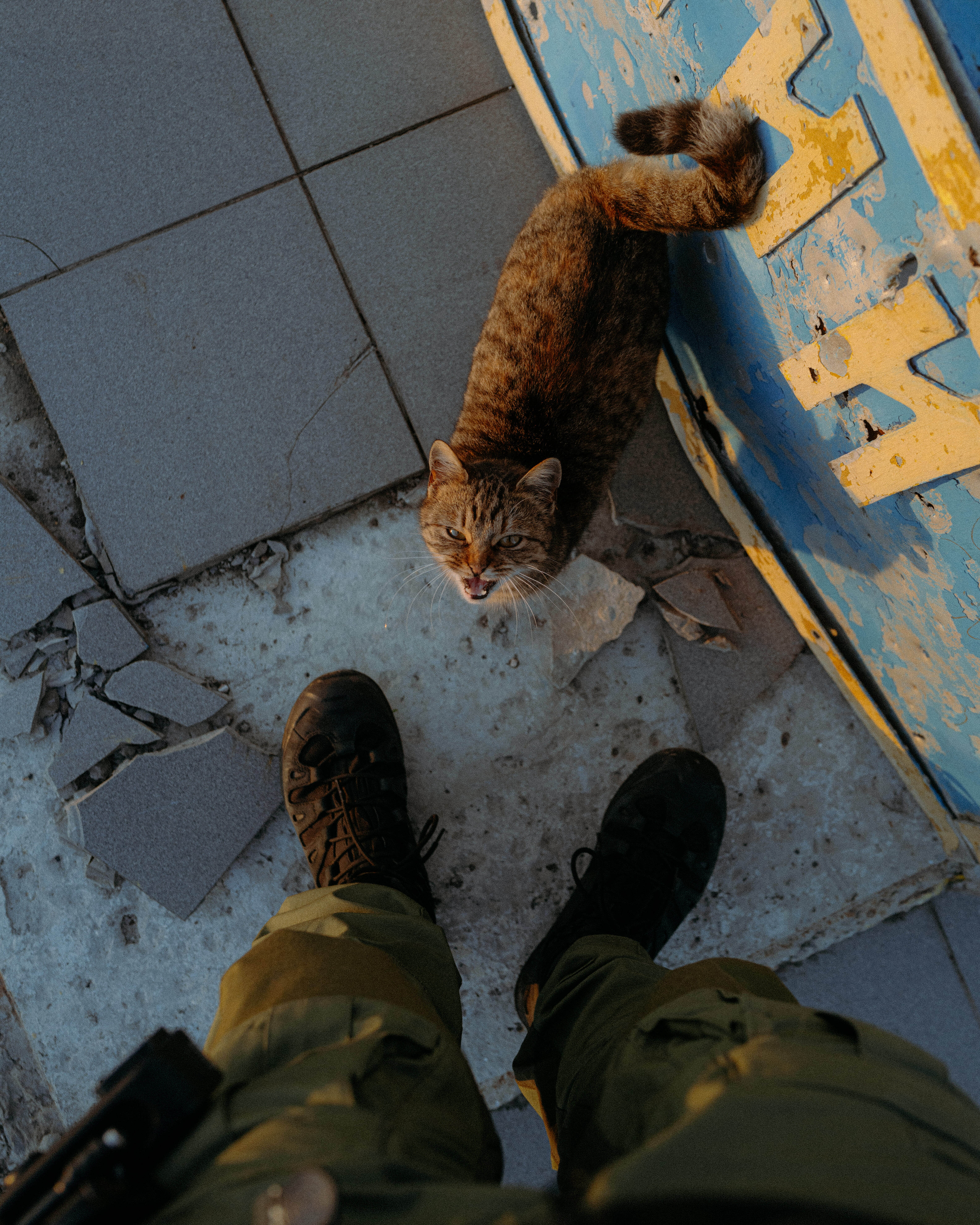
The realization of the dream became for Vitaly Yurasov a personal story and part of the great chronicle of the war:
“Be careful with your desires, because they come true. Dreamed of hitting the Snake with a camera from the moment it was knocked off by the enemy... This is an important place and moment in our recent history.”, - shares his impressions of Vitaliy.
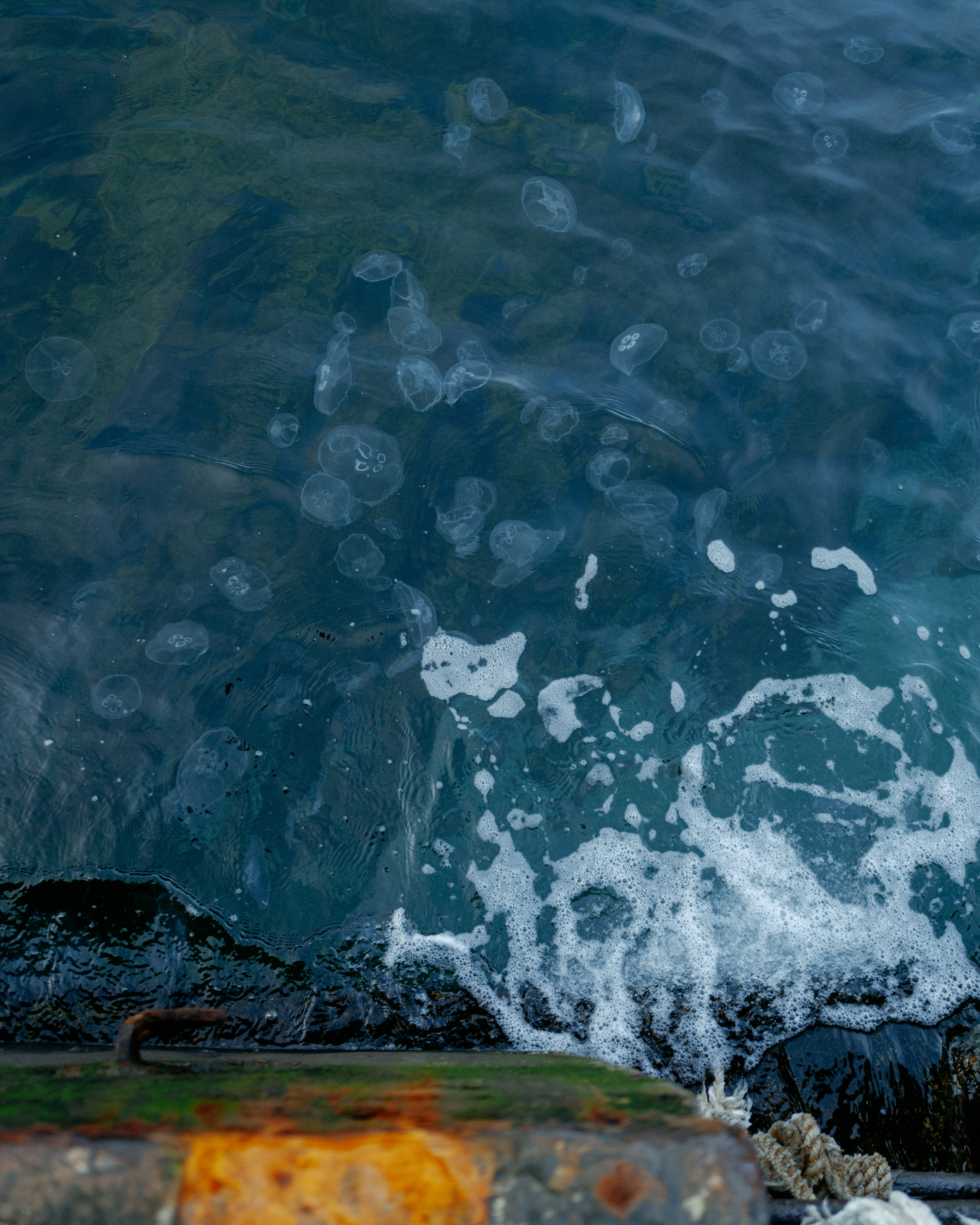
“I have been working with the units involved in the liberation of the island since the beginning of the full scale, so as a result, at some point, I was called there, too.”— says Yurasov. He was allowed to travel due to long prior cooperation with GUR MO and personal trust.
“They called me and said, “In 8 hours, be at the point ***** — we're going to the Rock.”
On Zmiiny Vitaliy spent all daylight hours. He was waiting for sunset to shoot the island in the best light, so it was time to explore it and shoot it, which is what he came for.
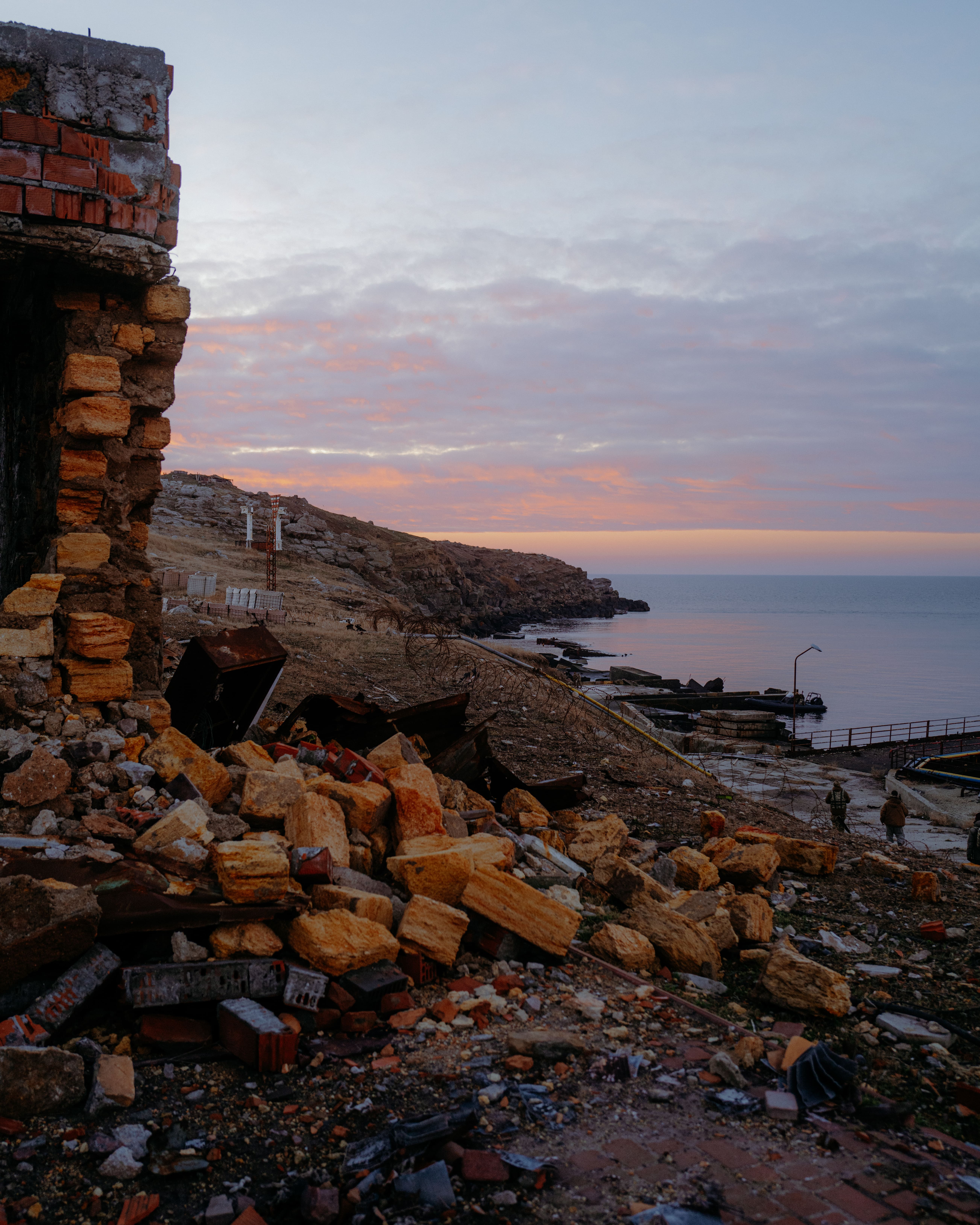

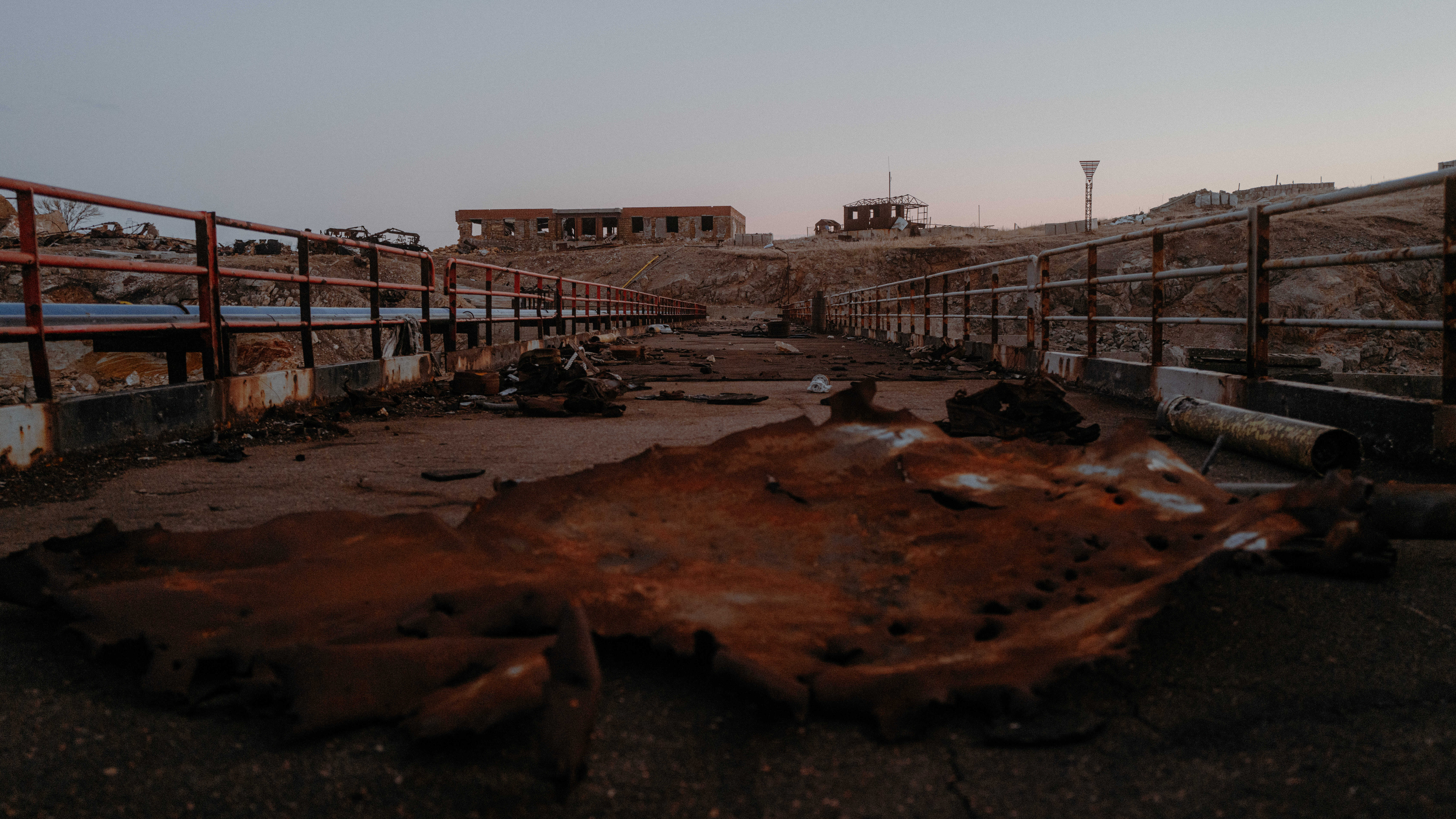
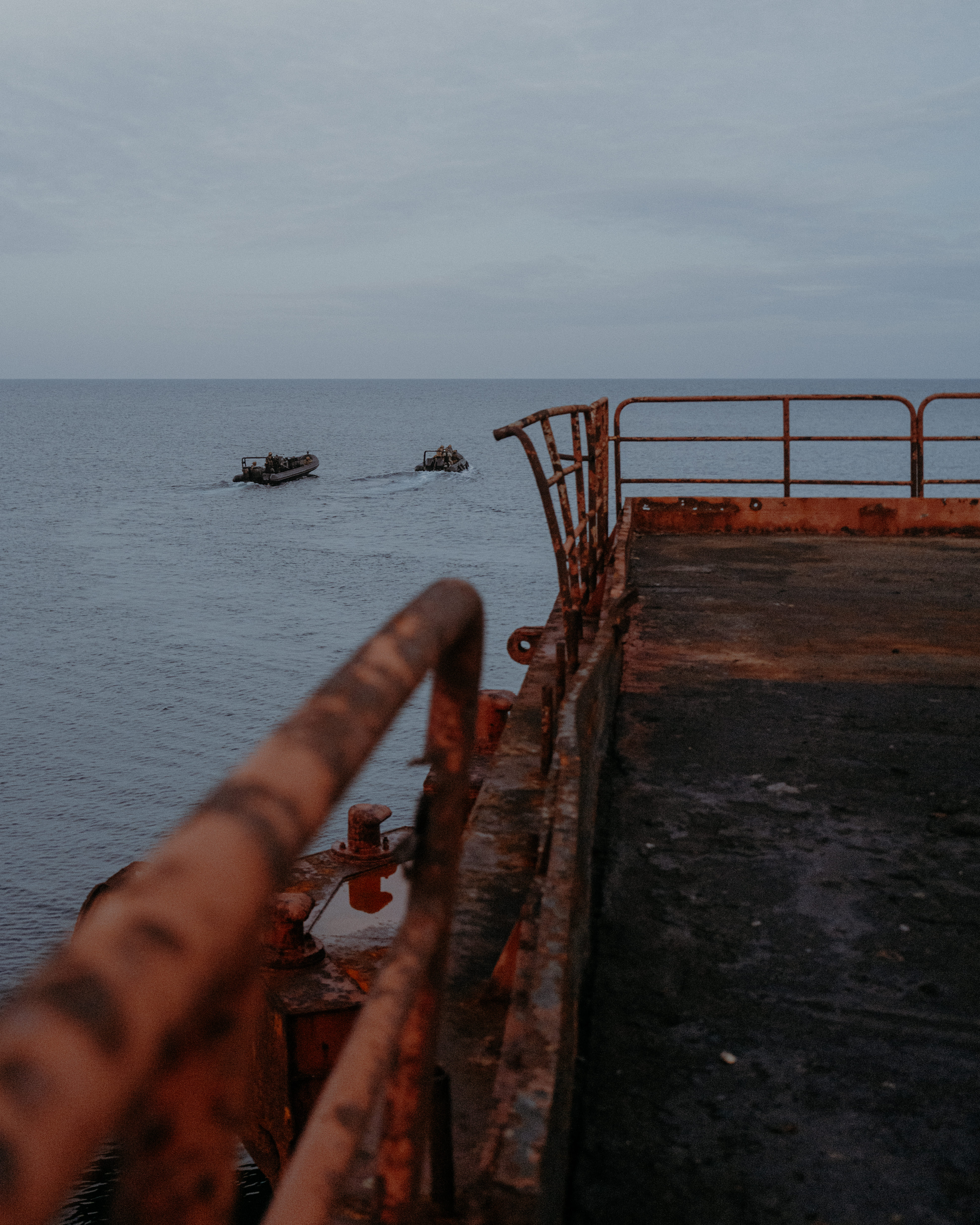
An island we didn't know
Yurasov emphasizes: what people imagine when they hear “Snake” does not correspond to reality at all.
“In fact, it is much bigger than everyone thinks. It is clearly visible from the drone and when you step directly on it with your feet: it is a huge rock that has burst out of the water during a tectonic shift. Ancient Greek relief, arches, grass — it feels as if you are on a distant Greek island, not 37 km from the coast of Ukraine”.
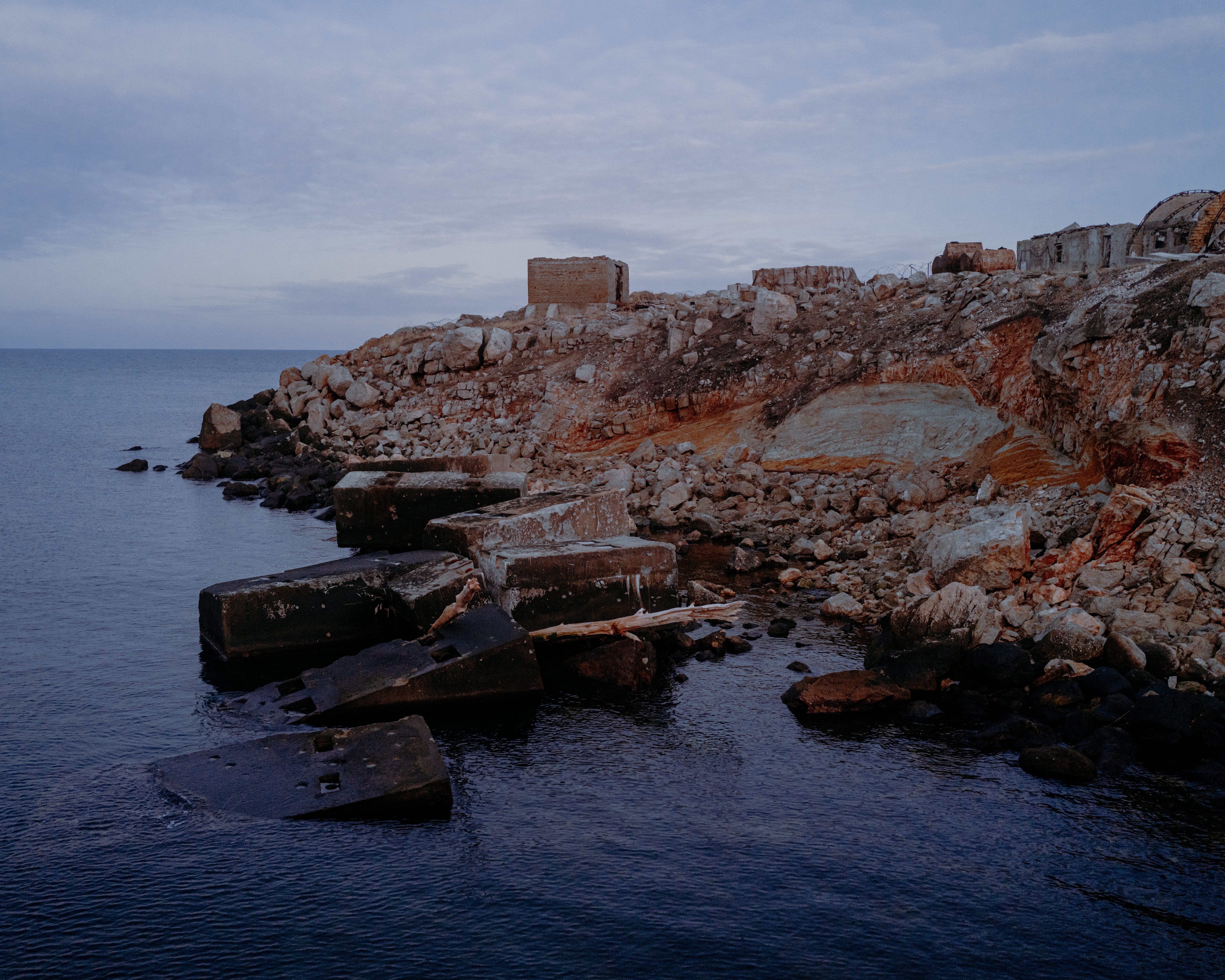
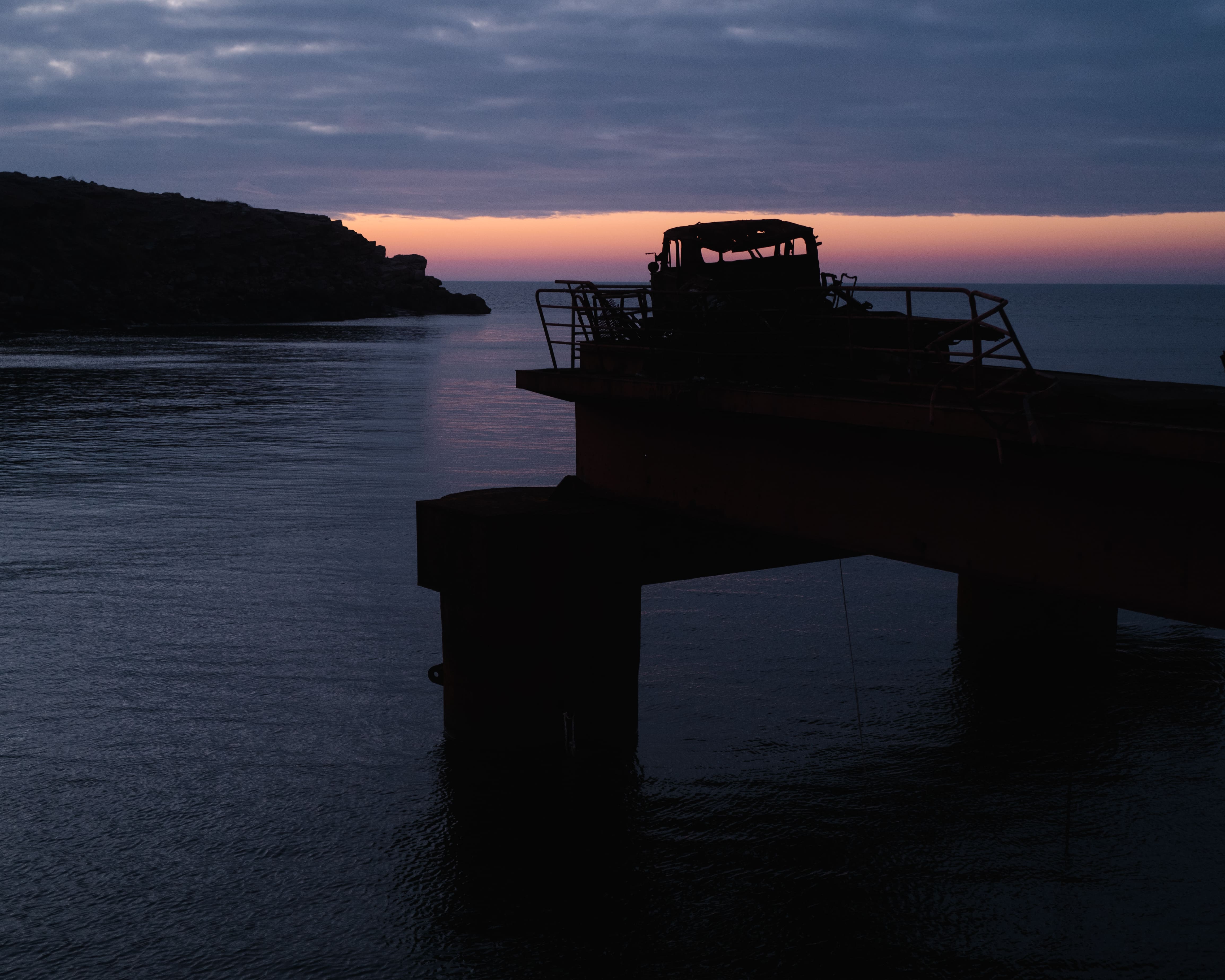
The island has an ancient history. According to legend, Achilles is buried here, and it was the Greeks who called the Serpent “the island of Achilles”. These parallels with antiquity, the striking landscape, the sea, the silence and the ruins of war create an atmosphere that the photographer calls “adventurous and mystical at the same time”.
“This is not the Donbas. There is another war. Here is the sea, silence, charged guys with the latest weapons, cats wandering among burned appliances, and greenery in the middle of winter. Sometimes the shahedeen flew directly overhead, but still it was fabulous.”, - shares Vitaliy Yurasov.

The photographer said that there are still many dangers on the Snake: “The whole island is densely mined and littered with unexploded ordnance, rockets, nuclear weapons, etc. There are paths that you can walk freely, but you should always ask the “locals” three times if you can go in one direction or another. Went wrong there — great chance to blow up. So sometimes the animals that live there die, so it's not a joke.
Historical snapshots
Yurasov's photographs are an attempt to preserve history through the most aesthetic, artistic, but still documentary photography, to show not only the pain and despair of this war, but also the inner strength of those who defend Ukraine.
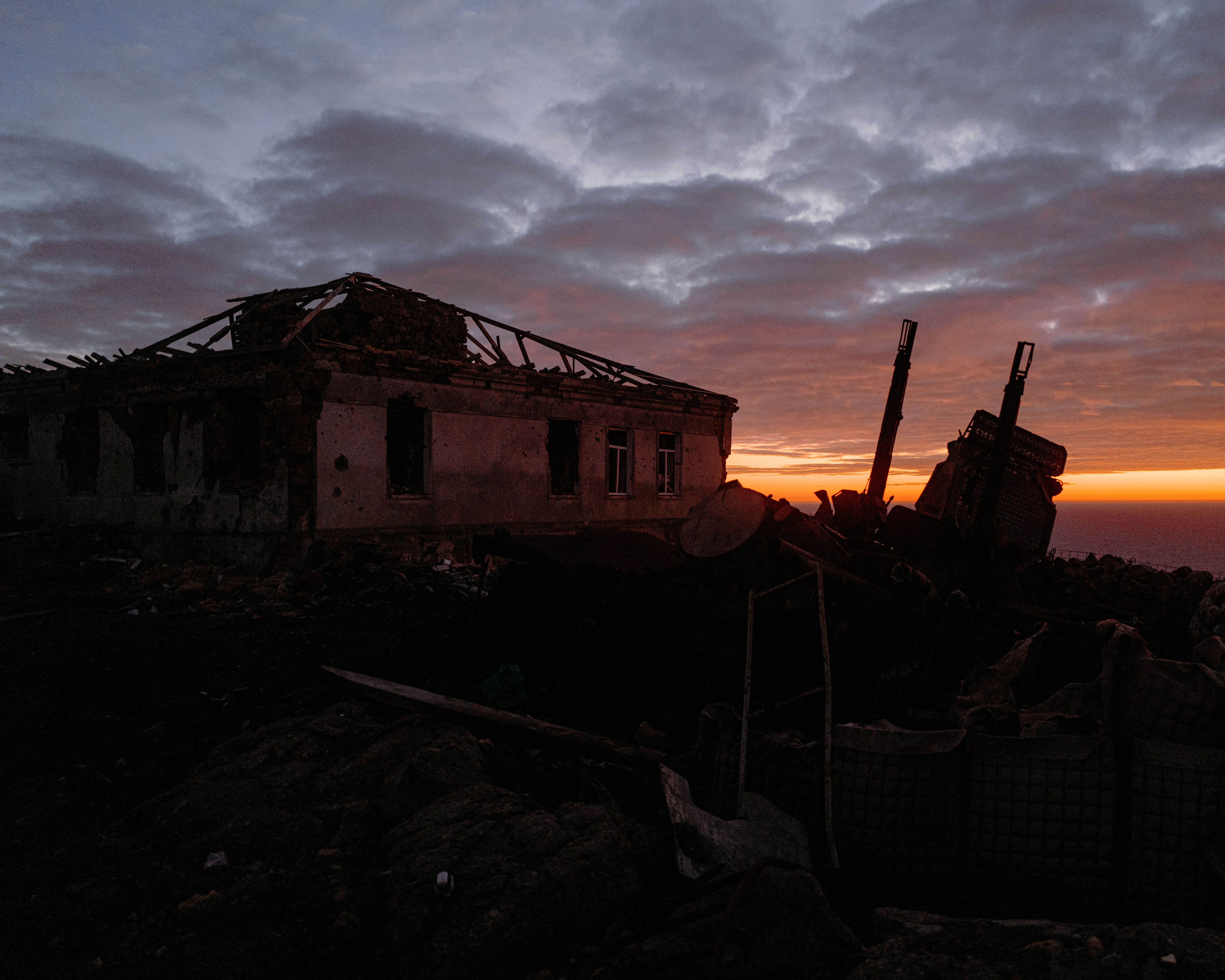
“I don't work as a press representative, I don't do editorial tasks, I work as a researcher. Zero, trenches, prisoner exchanges, covert operations of special forces, specialists, death, joy, courage, brotherhood — all these things I saw, passed through myself and tried to embody for history through photography., — Vitaly Yurasov talks about his work.
Vitalii Yurasov— Ukrainian freelance photographer, born in 1994 in Crimea, since 2001 he has lived in Kyiv. Before the full-scale war, he worked in commercial photography with brands Nike, Puma, BMW, etc. and artists. Since 2022, he has moved completely into documentary photography of the war, working as an independent researcher rather than a press. His style is subjective, emotionally involved, close to gonzo journalism: he lives with the military, captures their lives from the inside. He filmed “zero”, trenches, special operations, exchanges, losses and victories — he imprints the face of war for history.
Photographer's social networks: Instagram, Facebook.
Contributors:
Researcher of the topic, author of the text: Vira Labych
Picture editor: Olga Kovalyova
Literary Editor: Julia Futei
Site Manager: Vladislav Kukhar


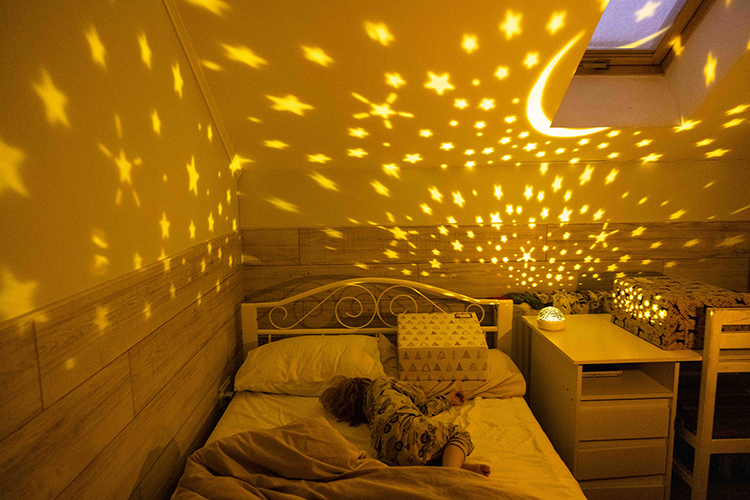
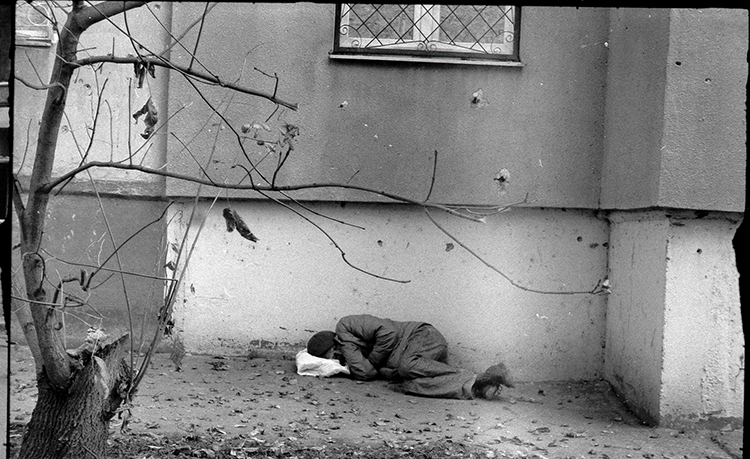
%20(750%20x%20360%20%D0%BF%D1%96%D0%BA%D1%81.)%20(3).png)

















